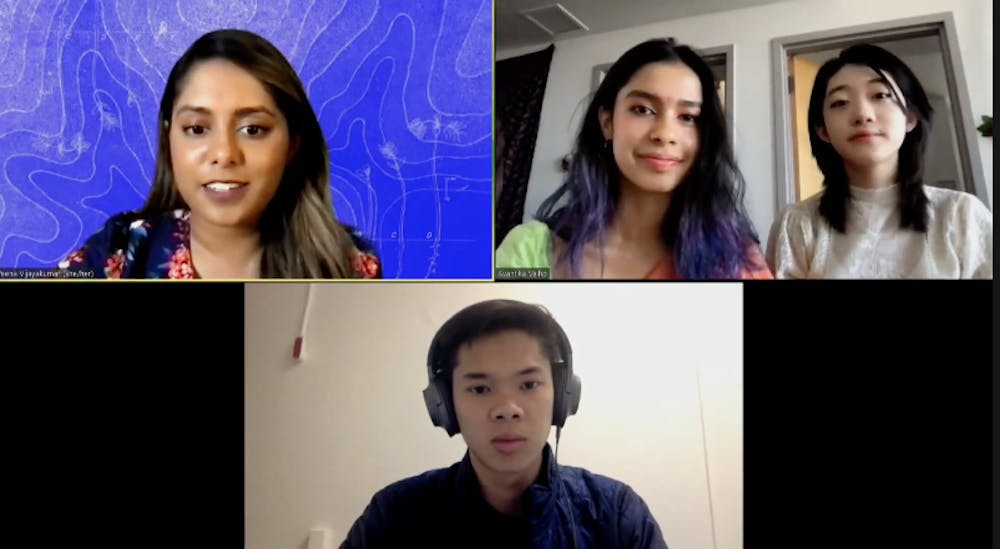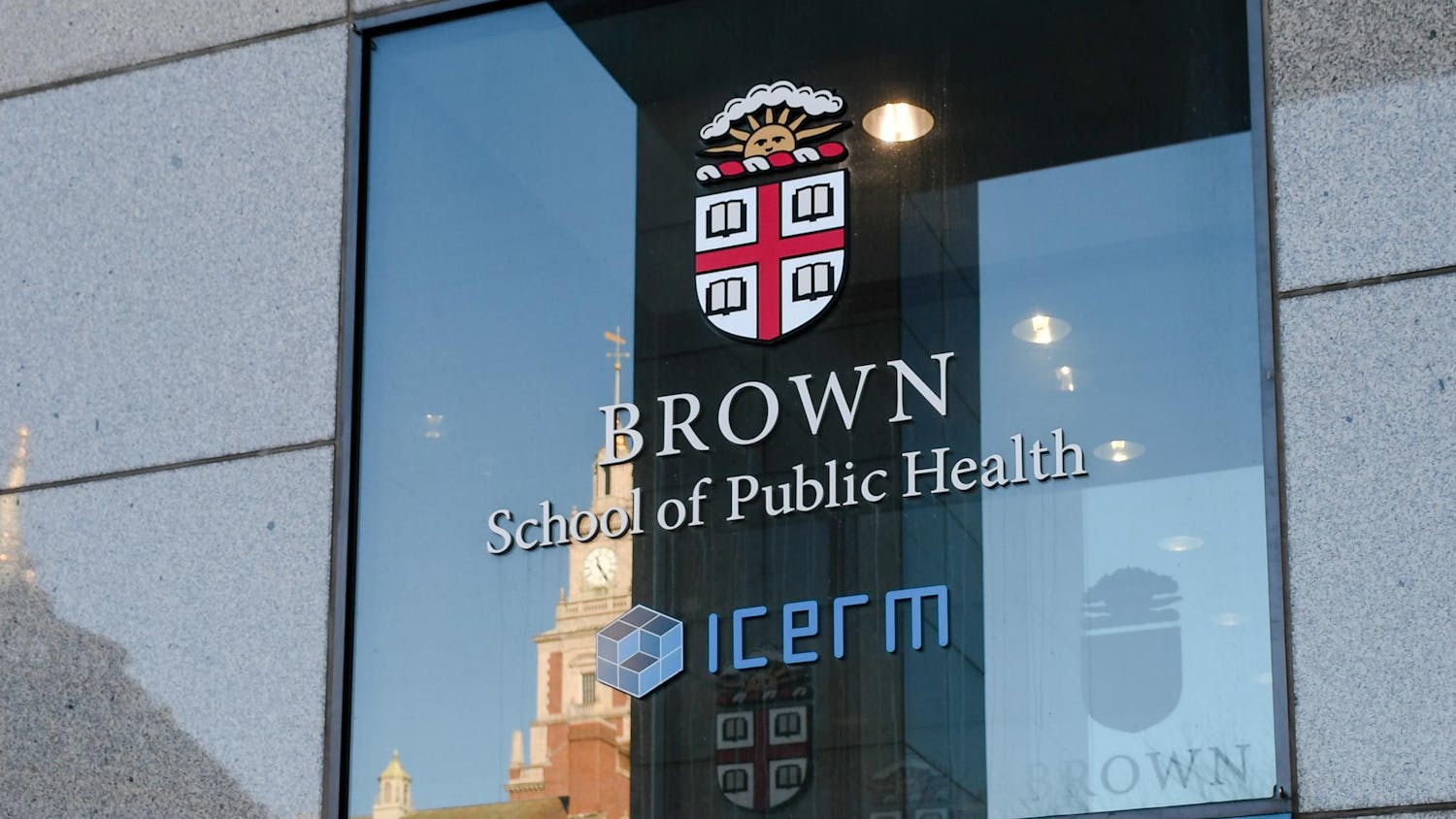A team of Brown and Rhode Island School of Design students recently won the inaugural Google Biodesign Sprint for their project Mobius, a manufacturing and disposal process for a biodegradable printed circuit board, or PCB. RISD industrial design students Avantika Velho and Connie Cheng and Alexander Le ’23, who studies computational biology at Brown, started working on the month-long project in October.
The Biodesign Sprint, organized by the Biodesign Challenge, invites “students, scientists, engineers, artists, designers, hobbyists — everyone — to come together and show off (their) brightest concepts and visions,” according to their website. For the inaugural Sprint, BDC partnered with Google to create prompts calling for biodesign ideas that can be made into commercial realities.
Velho, Cheng and Le created the idea for a novel PCB, a universal electronic component made of chitin, which is a type of substance that can be found in the exoskeletons of crustaceans and insects. Chitin has similar properties to the material currently used in PCBs. They proposed that this material can be obtained by bacterial fermentation of seafood waste. Other important components of the circuit board will be added to this chitin base.
“We are trying to implement something that can be integrated into the process of creation of PCB boards, so that we don’t have to dismantle the entire system,” Le said.
When the PCB reaches its end-of-life, bacteria can be used to break chitin down into pure nitrogen. This nitrogen can then be used in fertilizer for community gardens and farms. In addition to chitin, the PCB also contains heavy metals that are known to pollute water systems. To address this challenge in their sustainable process, the team proposed using a “microbial soup” of marine fungi to break down the metals into nanoparticles, which can then be used in research contexts.
“The prompt was basically about coming up with new materials to make future electronics and also reducing waste at the same time,” Velho said. “Since Google is a tech giant, they want to know how to make their products more sustainable.” The teams were tasked with creating ideas that were not too speculative but also pushed the boundaries of what currently exists in technology, she said.
The team initially considered redesigning an entire Google product, but eventually decided to focus on biodegradable PCB boards, which could be used by the company, and finding ways to remediate and dispose of the different materials used in such a PCB.
“We wanted to have both technical, feasible elements and also future thinking,” Cheng said. The concept of “microbial soup was very novel, but we also made sure that other products such as manufacturing and assembling were already compatible with existing production technologies.” Since chitin is very protein rich, this degradation process may produce useful products such as the repurposed fertilizer for developing countries where electronic waste is usually deposited, Velho added.
“It was important for us that we could find a way for communities to profit off of this tech boom that is already happening,” Velho said.
Another challenge was creating a project that could reasonably be implemented in five years, which was the time period proposed by the Biodesign Sprint committee, Le said. Given Google’s resources and the relatively abundant materials they decided to use, the team believes that the project is likely feasible within the time constraints.
In this year’s competition, 40 teams from 15 countries submitted their ideas. Each team’s presentation was shown live during the semifinals, held Nov. 3. The participants then engaged in a live Q&A with a panel, with judges from both Google and BDC. The top four non-student and student teams presented at the finals Nov. 4.
Adi Narayanan, materials science and engineering head at Google, commended the Mobius team’s work, recognizing the team’s research on relating to existing systems as well as on local sourcing. The team put a lot of effort into addressing the circularity of the problem, Narayanan said.
“It was great to have a broad system overview of not only what’s done currently, but also what you’re trying to do,” said Onye Ahanotu, a process and materials innovator and the founder of Ikenga Wines.
After receiving feedback from judges that their idea might be too generic halfway through the competition, the team added remediation steps to their original idea to set their project apart, Le said.
“Having done research for a while, (you know that) no idea is going to be super unique,” Cheng said. “So you just have to modify specific elements.”
Each member of the team brought interests and backgrounds that helped support the project. Velho’s interest in biology informs her work at RISD, she said, and she chose to study industrial design because of its relationship to the sciences. Velho also participated in the 2021 Biodesign Challenge, a year-long project, with other students. Cheng brought her experience in laboratory research in materials science, and Le’s knowledge of computational biology helped with research on the material used in the project.
Despite challenges with project production due to time conflicts with classes and other obligations, the team feels that the project was a good experience.
“After switching to computer science, I didn’t have much hands-on experience or time to think about materials and bioengineering, and I was excited to (undergo) this design-thinking process,” Le said.
Cheng felt that this challenge was the first time she truly combined her research and design interests and would like to participate in similar contests in the future. Velho has worked on various design projects at RISD but feels she has learned a lot about collaboration and team building from this project.
Velho was also pleasantly surprised that judges at Google chose a project that was more conceptual instead of a project that solely targeted Google companies. She was also impressed by Google’s attention to broad environmental projects such as Mobius, Velho said.
The team is in contact with Google and BDC about future steps of their project. “It’s always been a question whether larger corporations really have sustainable ethics in mind, because a lot of it is greenwashing,” Cheng said. “So this is really pleasant, because this is also, on a philosophical level, a step up from what we were expecting from Google.”





